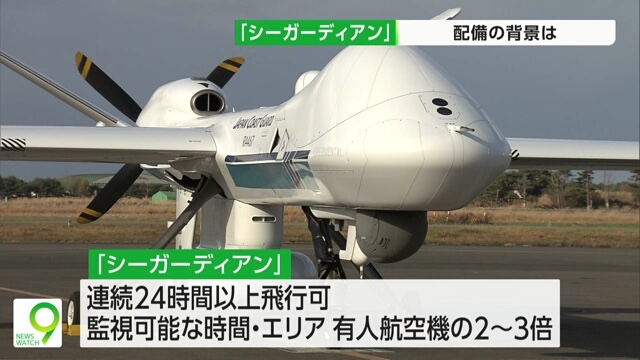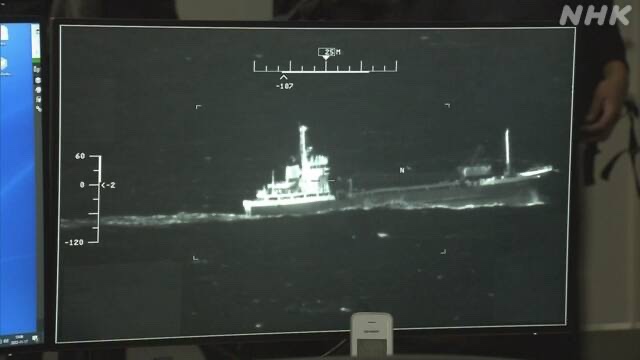

Japan Coast Guard:シーガーディアンを公開!
Sea Guardian libéré !
Sea Guardian veröffentlicht!
Sea Guardian Released!
日本海岸警衛隊:海上衛士發布!
ー先月運用を始めた無人航空機ー
「シーガーディアン」
オペレーションセンター11月17日、報道関係者に初めて公開されました。
ー基地内に設置された500㎡のオペレーションセンターー
施設には30以上のモニターが備えられ、
リアルタイムで海上映像:
「航空機に搭載された高性能のカメラで捉えた海上の映像」が、リアルタイムで映し出されます。
赤外線カメラで探知:
このカメラは、高度3000メートル以上から船などを確認できる。
夜間でも赤外線で、探知することが可能だとのこと。
コックピット:
パイロットの席:
衛星を通じて無人航空機を操縦する。制御担当者の席:
カメラやレーダーの制御担当者席で操作。海上保安官の監督のもと、領海警備や海難救助にあたる。
NHK
https://www3.nhk.or.jp/news/html/20221117/k10013895101000.html
Garde-côtes japonais : Sea Guardian libéré !
– Les véhicules aériens sans pilote ont commencé à fonctionner le mois dernier –
“Gardien de la mer”
Centre d’opération
Il a été dévoilé à la presse pour la première fois le 17 novembre.
ーUn centre d’opérations de 500㎡ situé à l’intérieur de la baseー
L’installation est équipée de plus de 30 moniteurs,
Image de la mer en temps réel :
Des « images de la mer captées par des caméras performantes montées sur des avions » sont affichées en temps réel.
Détecté par caméra infrarouge :
Cette caméra peut contrôler les navires et autres objets à une altitude de 3 000 mètres ou plus.
Il est possible de détecter avec des rayons infrarouges même la nuit.
poste de pilotage :
Siège pilote :
Pilotage de véhicules aériens sans pilote via des satellites.
Siège du personnel de contrôle :
Opérez depuis le siège de la personne en charge du contrôle de la caméra et du radar.
Sous la supervision d’un officier des garde-côtes, ils participent à la patrouille et au sauvetage des eaux territoriales.
NHK
Japanische Küstenwache: Sea Guardian veröffentlicht!
– Unbemannte Luftfahrzeuge haben letzten Monat den Betrieb aufgenommen –
“Meereswächter”
Operationszentrum
Am 17. November wurde es erstmals der Presse vorgestellt.
ーEin 500㎡ großes Operationszentrum innerhalb der Basisー
Die Anlage ist mit mehr als 30 Monitoren ausgestattet,
Meeresbild in Echtzeit:
“Bilder des Meeres, die von an Flugzeugen montierten Hochleistungskameras aufgenommen wurden”, werden in Echtzeit angezeigt.
Von Infrarotkamera erkannt:
Diese Kamera kann Schiffe und andere Objekte aus einer Höhe von 3.000 Metern oder mehr überprüfen.
Es ist sogar nachts möglich, mit Infrarotstrahlen zu detektieren.
Cockpit:
Pilotensitz:
Steuern unbemannter Luftfahrzeuge durch Satelliten.
Sitz des Kontrollpersonals:
Bedienen Sie sich vom Sitz der Person aus, die für die Steuerung der Kamera und des Radars zuständig ist.
Unter der Aufsicht eines Offiziers der Küstenwache sind sie an Patrouillen und Bergungen in Hoheitsgewässern beteiligt.
NHK
Japan Coast Guard to deploy more unmanned aircraft to bolster surveillance
NHK WORLD-JAPAN News
NHK has learned that
the Japan Coast Guard is preparing to deploy more unmanned aerial vehicles to step up surveillance activities in waters around Japan.
Sources say
the coast guard plans to increase the number of SeaGuardians from the current one to three by April at the earliest, and add more later.
Coast guard officials say
the aircraft introduced in October this year can be remotely piloted from a ground control station.
Its high-definition cameras
can detect ships and other objects from altitudes of over 3,000 meters, and identify them at night using infrared rays.
The SeaGuardian
can fly more than 24 hours nonstop and send images in real time to have them checked on the ground.
The officials say
they will use the aircraft for patrolling territorial waters and rescue operations.
The SeaGuardian is believed
to have more than double or triple the capabilities of manned aircraft in terms of flying time and areas covered.
The unmanned vehicles are
likely to be deployed mainly in waters off the Noto Peninsula in the Sea of Japan where illegal fishing by North Korean and Chinese vessels is rampant.
Japan’s Maritime Self-Defense Force
also plans to begin operations of the SeaGuardian on an experimental basis in the next fiscal year starting in April.
The coast guard says it is considering sharing real-time information with the MSDF.